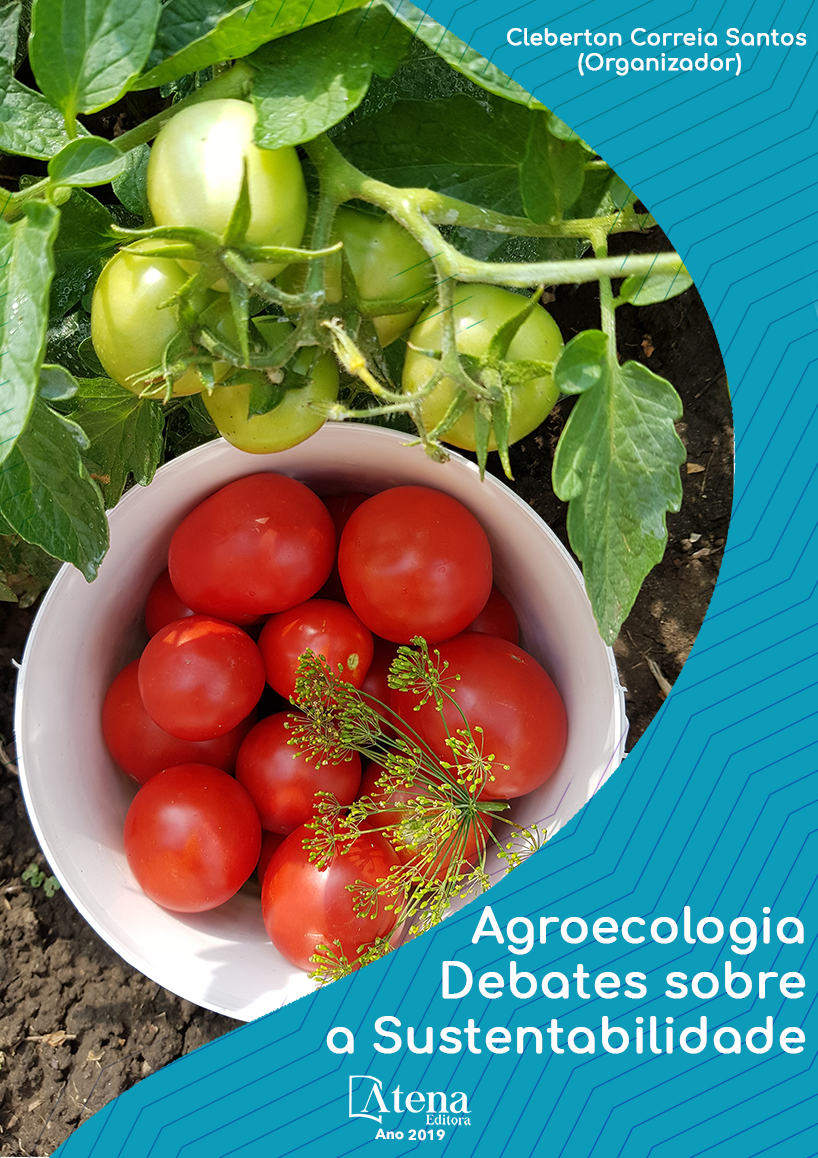
A influência de cultivos agrícolas em parâmetros da qualidade do solo
O solo dos agroecossistemas
é um ambiente complexo constituído por
atributos químicos, físicos e biológicos que
interagem entre si e são influenciáveis pelo
manejo das culturas agrícolas. Desta forma,
esse trabalho avaliou a qualidade do solo a
partir da temperatura da superfície do solo, da
capacidade de retenção de água (CRA) e da
respiração microbiana (RBS) em três cultivos
agrícolas: pomar orgânico, horta orgânica
e solo descoberto. A maior temperatura da
superfície do solo durante o dia foi registrada no
solo descoberto em relação ao solo do pomar e
da horta, pois nesses últimos havia cobertura
vegetal que impedia a incidência direta da
radiação solar no solo. Maiores temperaturas
da superfície do solo indicam calor excessivo
para grande parte da biota benéfica, limitando
a sua presença e atividade. A CRA do pomar
foi maior que da horta e solo descoberto,
indicando maior presença de macroporos no
primeiro, que em situações de estresse hídrico
permitem o fornecimento de água para as
espécies cultivadas por maior período de tempo
do que nos outros cultivos. Já a RBS no pomar
e na horta foram superiores ao solo descoberto,
demonstrando que os dois primeiros reúnem
melhores condições de abrigo da biota do solo.
Os melhores indicadores de sustentabilidade
observados no pomar podem ser resultado da
ausência de revolvimento do solo e emprego
Agroecologia Debates sobre a Sustentabilidade Capítulo 11 100
de cobertura vegetal permanente nas entrelinhas, que possuem impacto positivo
tanto no componente físico relacionado à capacidade de retenção de água quanto no
componente biológico relacionado à respiração do solo e temperatura.
A influência de cultivos agrícolas em parâmetros da qualidade do solo
-
DOI: 10.22533/at.ed.99319240711
-
Palavras-chave: Respiração basal do solo, Capacidade de retenção de água, Qualidade do solo, Ecologia do solo, Manejo agrícola.
-
Keywords: Soil basal respiration, Water retention capacity, Soil quality, Soil ecology, Agricultural management.
-
Abstract:
The agroecosystems soil is a complex environment constituted by
chemical, physical and biological attributes that interact with each other and are
influenced by agricultural crops management. Thus, this work evaluated soil quality
from soil surface temperature, water retention capacity (CRA) and soil basal respiration
(RBS) in three agricultural crops: organic orchard, organic vegetable garden and
uncovered soil. The highest soil surface temperature during the day was recorded in
the uncovered soil in relation to the soil of the orchard and the vegetable garden,
because in the latter there was vegetation cover that prevented the direct incidence
of solar radiation in the soil. Higher soil surface temperatures indicate excessive heat
for much of the beneficial biota, limiting its presence and activity. The CRA of the
orchard was higher than that of the vegetable garden and the uncovered soil, indicating
a higher presence of macropores in the first, which in water stress situations allow
water supply to the cultivated species for a longer period than in the other crops. The
RBS in the orchard and in the vegetable garden was superior to the uncovered soil,
demonstrating that the first two had better shelter conditions for soil biota. The best
sustainability indicators observed in the orchard may be the result of the absence of
soil revolving and permanent plant cover between rows, which have a positive impact
both on the physical component related to the water retention capacity and on the
biological component related to soil respiration and temperature
-
Número de páginas: 15
- Lisandro Tomas da Silva Bonome
- Henrique von Hetwig Bitterncourt
- Matheus Felipe Kruppa
- Edidouglas de Souza
- Heitor Flores Lizarelli
- Leonardo Khaoê Giovanetti


